Choosing the Best Seating Arrangement for Your Event
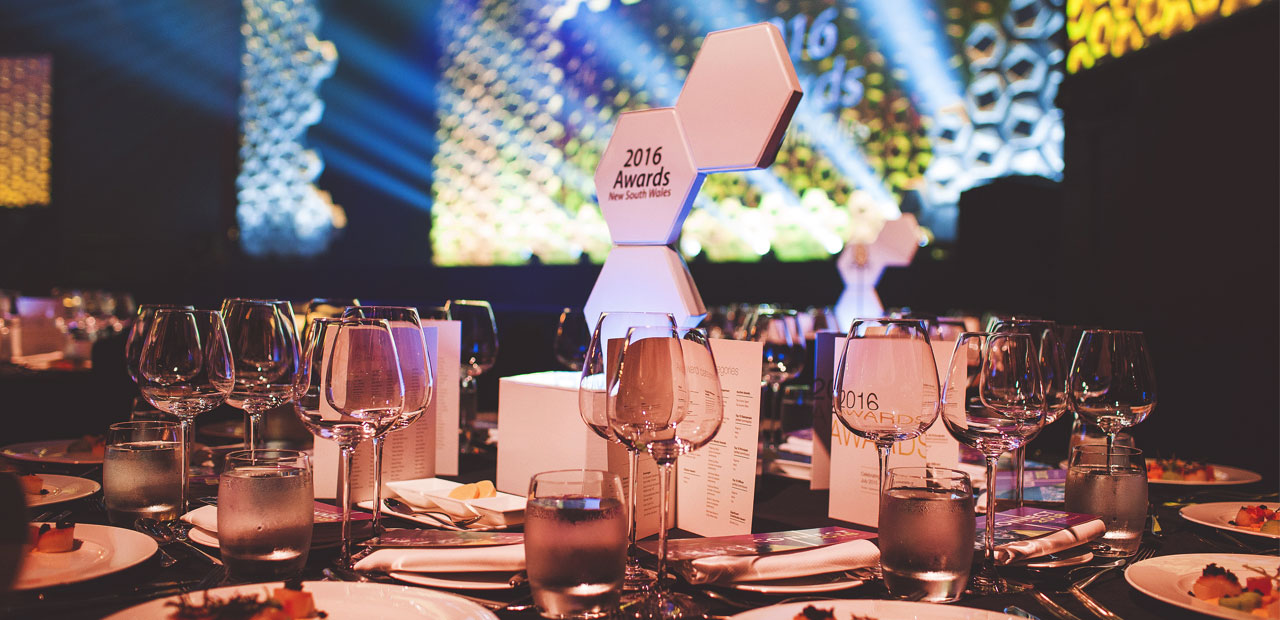
What Formal Seating Arrangement Best Suits Your Event?
Seating arrangements are the key to any event. It can make the difference between an enjoyable, successful event and one that leaves people feeling frustrated and irritated. Seating planning isn’t just about comfort; it’s also about creating an experience for your guests. Everyone should feel comfortable and integrated into the whole scope of the event. If done right, the perfect arrangement creates a feeling of unity among guests leading to greater enjoyment. As a result, you have created an experience that’s both memorable and worth sharing.
Whether you’re an event manager, corporate executive assistant, personal assistant, or someone who is casually planning an event, you want to ensure you have the perfect formal seating arrangement for your next occasion, and this comprehensive guide will show you how. Let’s get started!
What Are the Different Types of Seating Arrangements?
Below, we’ve put together an infographic gallery that shows some of the most popular seating arrangements. Each style varies depending on what type of event you’re hosting and how you want your guests to interact with each other.
Image Captions:
- Banquet: Guests can mingle together while seated around a round table.
- Classroom: The chairs and trestle table are organised in a straight row.
- U-Shape: This is a table and seating style similar to the shape of the letter “U.”
- U-Shape Horse: The chairs are arranged like a U-shape but without the tables.
- Boardroom: Guests are seated around an elongated table, facing each other.
- Cabaret: An audience is seated in an arc facing toward a stage.
- Closed Square: Participants sit on all four sides of a square table with no open end.
- Cocktail: This doesn’t utilise tables or chairs, and guests can freely roam to socialise.
- Herringbone: As opposed to the classroom style, tables and chairs are angled towards the stage.
- E-shape: It’s formed by having two rows of chairs facing each other with a centre aisle down the middle.
- T-shape: The front row is like a column, and the middle row forms the “T” shape.
- Semi Circle: The seating area is shaped like half of a circle, with the audience facing the stage.
- Lounge: Sofas, coffee tables, chairs, are set up in clusters to form a relaxed event venue.
The Benefits of Each Type of Seating Arrangement
To give you inspiration for your next event, we elaborated on each seating style and the type of event they suit, so you can decide which one works best for your next event.
Banquet seating arrangements
Using banquet style seatings, guests are seated across from one another at multiple round tables (usually 5-10 per table). This allows for easy mingling and superb opportunities for conversations. This style is perfect for wedding receptions, seminars, awards nights, business dinners, and parties.
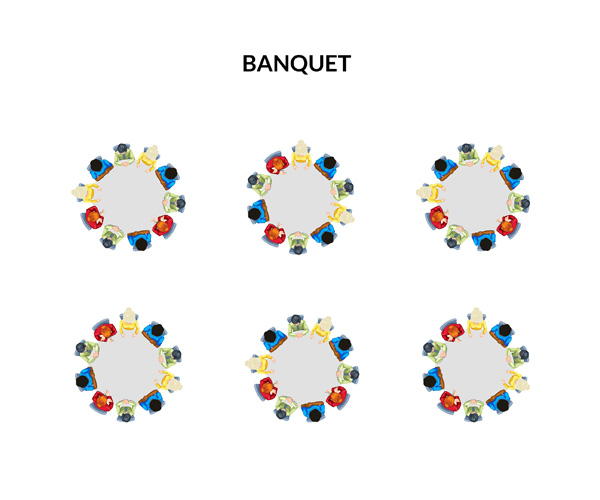
Classroom Seating Arrangement/Workshop Seating Arrangement
A perfect arrangement for lectures, conferences, group discussions, and info sessions, classroom-style seating is similar to theatre styles but without the addition of desks. Desks and chairs are arranged in rows parallel to the lecture podium, or it may be arranged as a theatre-style set-up with rows at an angle, so everyone can easily see the speaker.
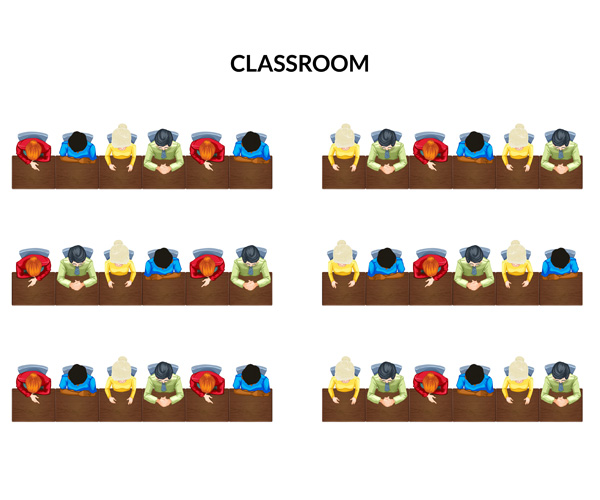
U-Shape seating arrangements
The U-shape seating style is a space-saving and collaborative method of seating. It saves floor space while allowing collaboration and interaction between guests. It’s a popular choice for smaller group training scenarios, breakout sessions, conferences, meetings, and other similar events.
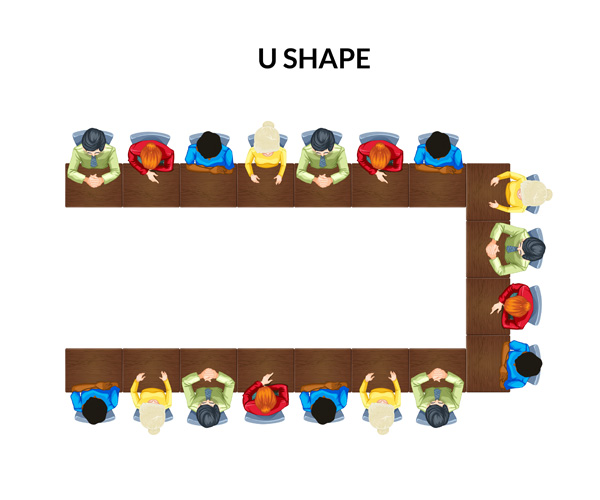
U-Shape Horse seating arrangements
This seating arrangement is similar to the U-shape configuration, except that there are no tables. It only uses chairs arranged in a U-shape style seating, with the audience facing inwards — making it a good choice for large meetings, team orientations, and presentations. It allows the speaker to approach and engage with each person individually easily.
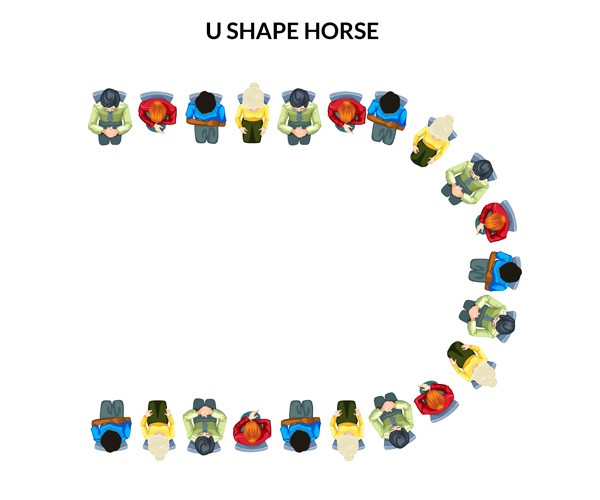
Boardroom seating arrangements
If you are having an event with a small group of guests, then boardroom-style seating is an excellent choice. Here, the attendees are seated around a rectangular table. It’s excellent for smaller conferences, meetings, and seminars because it allows for privacy and discussion and is still efficient for presentations.
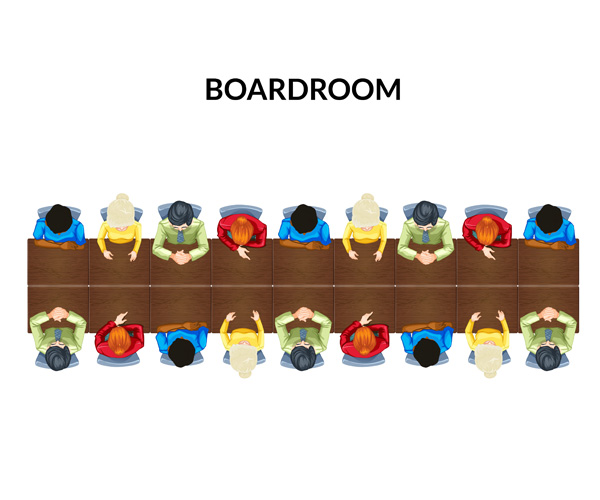
Cabaret seating arrangements
Ideal for workshops, gala dinners, presentations, live entertainment, and award nights, cabaret-style seating is similar to a banquet, but the audience is seated in a semi-circle facing the stage — instead of being arranged fully around the table. This gives them a clear view of the presenter.
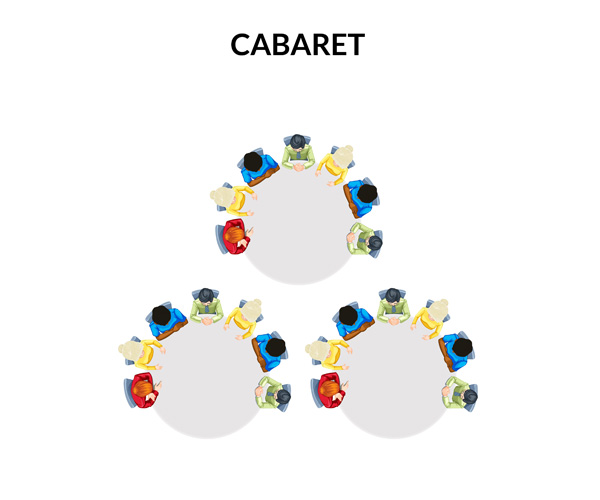
Closed Square seating arrangements
The name says it all! This arrangement gives people the extra room they need without encroaching on the space of everyone else. The closed square style is best for groups who will be eating meals or working on laptops, seminars, workshops, or events with fewer than 30 guests.
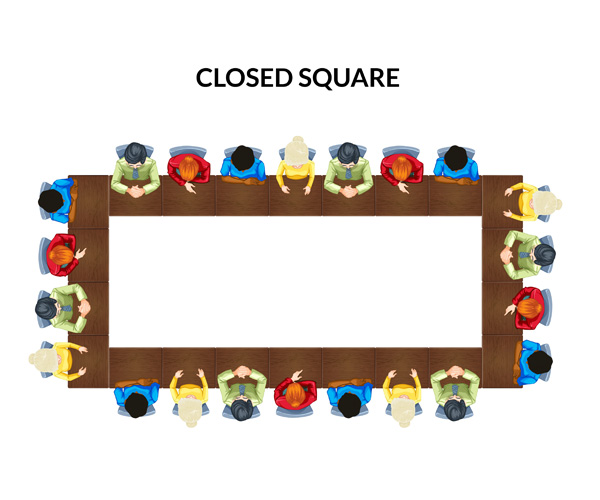
Cocktail seating arrangements
When planning for big events such as cocktail parties, weddings, and other social events, a cocktail seating arrangement is a perfect option. You get the maximum use of floor space by eliminating the use of chairs, so your attendees can mingle freely and comfortably. If you need a floor plan cocktail party layout, professional event creatives like Events Fantastic can help you do the job!
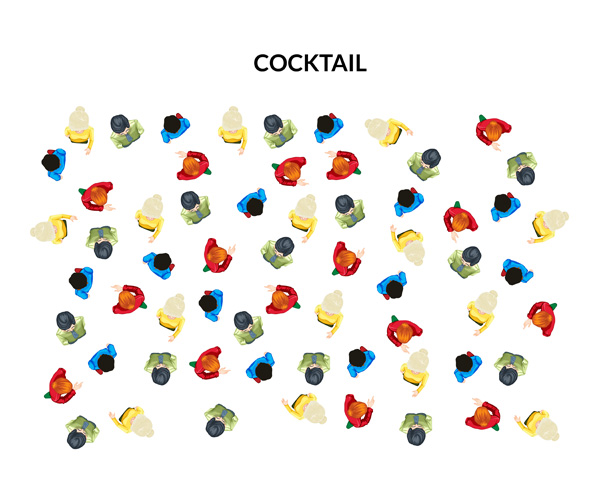
Herringbone seating arrangements
The Herringbone seating arrangement is used primarily in training centres and conference halls. Here, the furniture is set up in rows angled toward the podium — creating more opportunities for collaboration and participation.
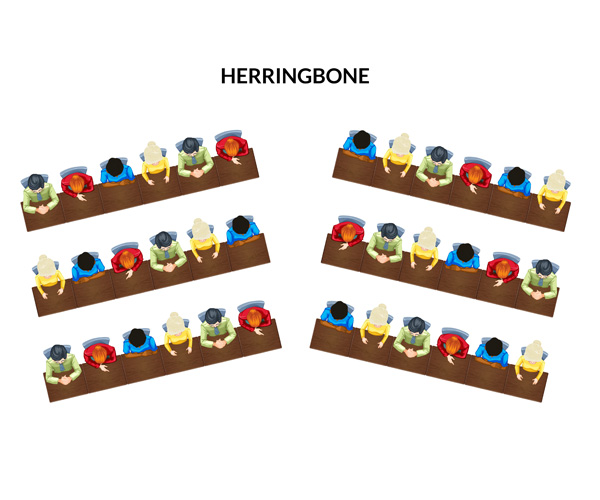
E-Shape seating arrangements
E-shape seating involves placing the tables in an “E” shape. This style allows for the majority of attendees to have an unobstructed view of the projection screen or speaker while leaving room for food, drinks, and other items. It’s ideal for events like conferences, workshops, and seminars.
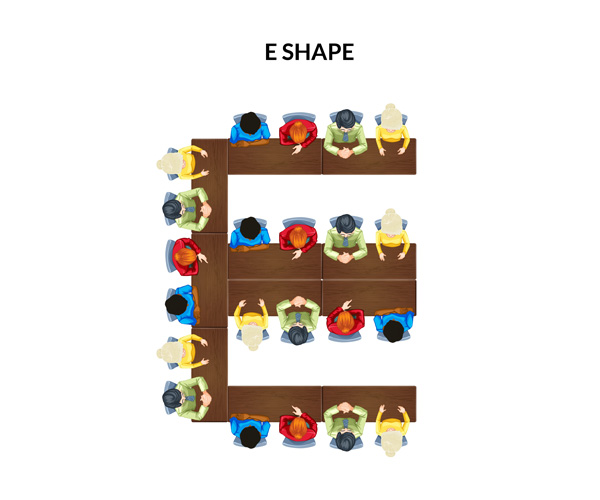
T-shape seating arrangements
An ideal choice for meetings, team collaboration, and other similar events, the T-shape seating arrangement is named for the shape that the furniture makes when it’s all arranged. The speaker sits or stands at the top of the “T” and has direct access to everyone else in the room.
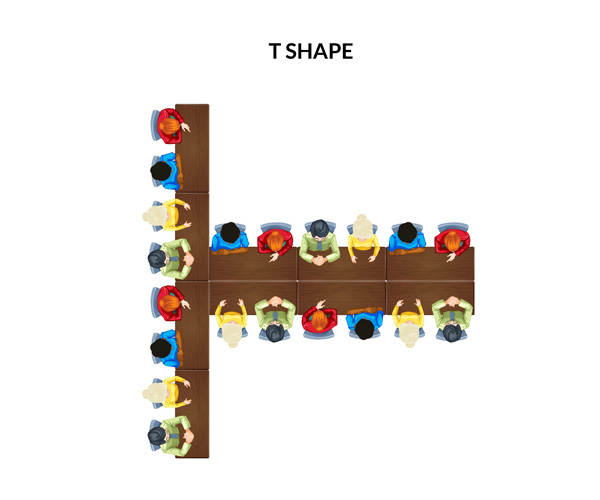
Semi-Circle seating arrangements
Arranged in a semi-circle configuration, this is an excellent way to create a dynamic, engaging event space that can be used for everything from lectures to workshops or even outdoor events. The arrangement allows everyone to see each other easily and encourages interaction.
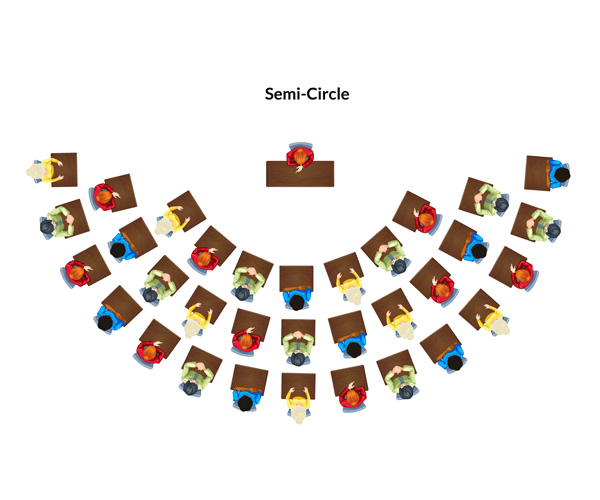
Lounge seating arrangements
Lounge-style seating is a great way to make an event feel more inviting and comfortable. Indoor or outdoor space can be set up (using sofas, tables, or chairs) in a variety of ways to accommodate different needs and preferences, making it perfect for entertainment events, gala nights, charity events, and other informal events.
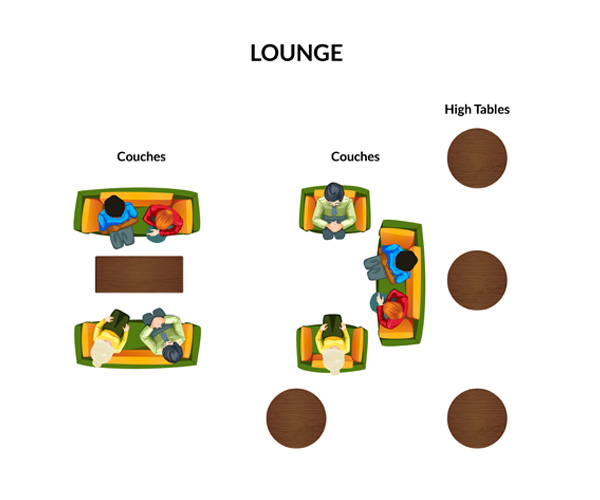
How Do You Choose the Best Seating Arrangement for Your Event?
When you’re thinking of the question “What seating arrangement is best suited for my event?” — you must first consider the following factors:
- Type of event: The seating arrangement should match the event’s purpose.
- Venue: When choosing the seating style, the structure and size of your venue are a must.
- Activities: It’s vital to consider a seating arrangement that caters to the event’s activities, such as games and taking notes.
- Number of guests: It’s crucial to have a rough estimate of attendees and plan accordingly.
- Space: The seating style should fit in the room’s floor space — while providing ample space for guests to move comfortably. Otherwise, the place may feel cramped.
- Browser: It allows you to display your seating layout and other event details.
- Design: Your seating style option should complement the event’s overall design.
- Information: You must know every detail of the event to select the right seating arrangement
- Arrangements: We recommend that you plan your seating arrangement carefully, and ensure that guests can have sufficient leg room and elbow space to feel more comfortable.
- Party: You also need to consider if there’s an after-event party. This helps you figure out the best seating plan that suits both the main event and after-event party.
Your Questions Answered on the Best Seating Arrangement for Your Event
What are some common mistakes people make when choosing a seating arrangement?
When it comes to seating arrangements, there are a lot of things that could go wrong. If you don’t consider the following factors, your event can fall short:
- Type of event
- Space
- Activities
- Number of guests
- Type of guests
- Room layout
- Event theme
- Food and drink
Does event seating arrangement affect the audience participation?
Absolutely! The right seating arrangement makes your audience feel comfortable — like they belong there. This creates an atmosphere that encourages audience participation.
Can you mix different event seating arrangements?
Yes! For example, there are many benefits to mixing banquet and theatre seating styles. Both configurations have their own advantages, but they can also be combined to meet the needs of different types of audiences. The key is to understand their needs and then ensure that these are met.
In addition, presenting different seating styles in one room is an effective way to maximise seating capacity. For example, if a conference has more attendees than the seats, you may use the cabaret style at the front and add theatre seating at the back. This way, it can accommodate more delegates and allows for some of the tables to be in place for the dinner turnaround.

You can also consider mixing round and rectangular tables with a theatre-style seating arrangement or banquet seating at the front of the room and lounge and/or cocktail at the rear. In general, your creativity is the limit!
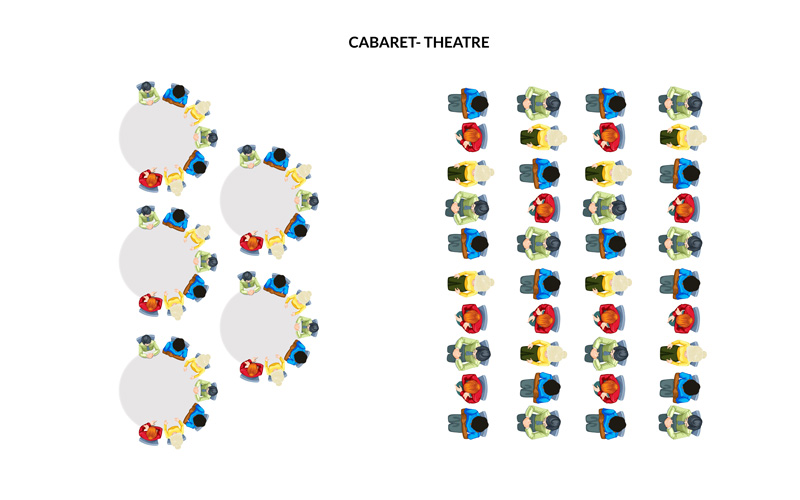
How can I choose the perfect seating arrangement for my event?
As mentioned above, the ideal seating style for an event varies depending on several factors. If you consider each of them, we’re sure you’ll nail the perfect configuration. However, if you’re unsure, a professional event planner like our team at Events Fantastic can help you turn your ideas into fantastic experiences worth sharing.
Should I assign seats for every guest?
Usually, we recommend a seating chart for events with more than 50 people. Also, it’s helpful for events with meals and when guests have special dietary requirements to avoid confusion when serving different menus.




